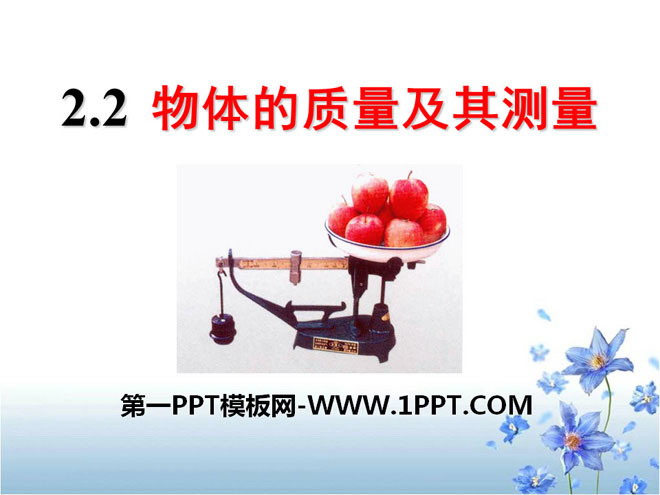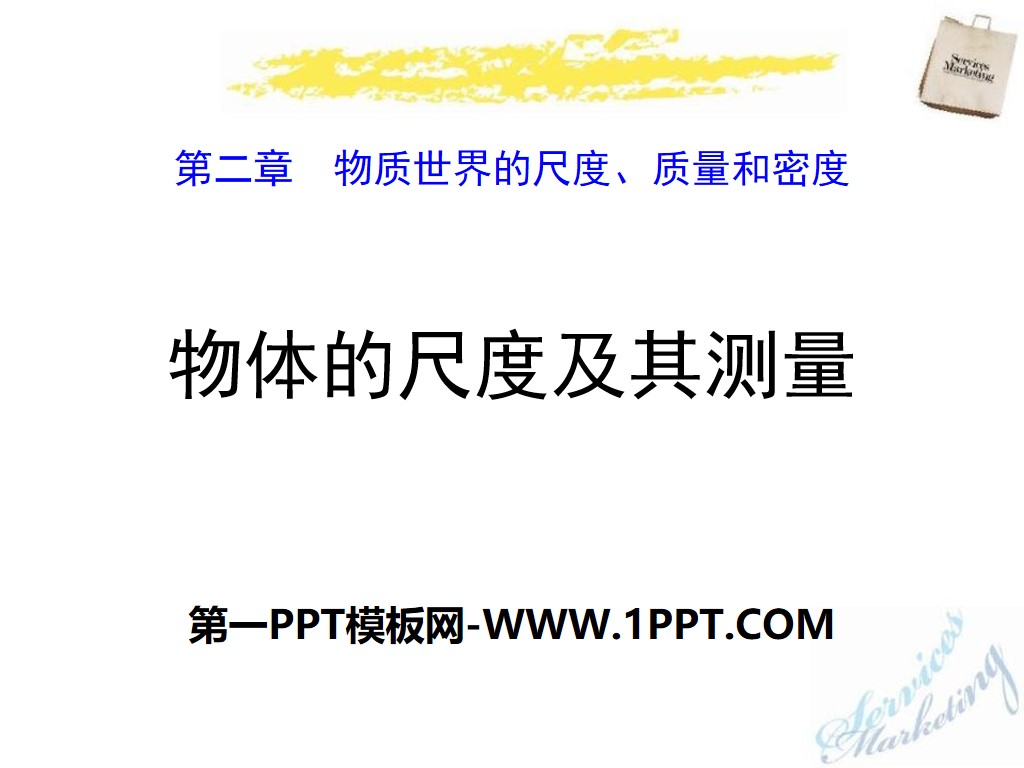
| Category | Format | Size |
|---|---|---|
| People's Education Edition seventh grade biology volume 1 | pptx | 6 MB |
Description
"Practice using a microscope" Cells are the basic unit of life activities PPT courseware 2
learning target
1. Explain the basic structure and functions of a microscope
2. Explain the correct way to use the microscope
3. Recognize the important role of the microscope and take good care of it
Knowledge point 1: Master the structural characteristics of eyepieces and objective lenses and the relationship between lens length and magnification.
example 1. There are two lenses in the mirror box of an optical microscope. There is a screw on one end of the lens.
thread, B has no thread, A and B are respectively ( )
A. Eyepiece, objective lens B. Objective lens, eyepiece C. Both are objective lenses D. Both are eyepieces
Example 2. 4 lenses in the microscope lens box. Lenses A and B have threads on one end, while lenses C and D have no threads. Lens A is 3 cm long, lens B is 5 cm long, lens C is 3 cm long, and lens D is 6 cm long. I would like to ask: Use the above lenses to observe a certain mounted film. When the observation is clear, the closest distance between the objective lens and the mounted film is _____; under the same light source conditions, the lens with the darkest light in the field of view is ________.
Knowledge point two:
The magnification of the microscope = the magnification of the objective lens × the magnification of the eyepiece
Magnification refers to the magnification of the width and length or diameter of an object, rather than the magnification of the area and volume.
example 1. If a small object is magnified 50 times, "magnified 50 times" here refers to the small object ( )
A. Volume B, surface area C. Image area D. length or width
Example 2. If a cell is observed in the center of the field of view using a 10x eyepiece and a 10x objective lens, and only the 40x objective lens is used, the object image of the cell will be magnified compared to the originally observed cell diameter ( )
A. 4 times B. 16 times C. 100 times D. 400 times
Knowledge point 3: Characteristics of microscope imaging:
(1) An inverted image appears under a microscope (up, down, left, and right are simultaneously reversed).
(2) The relationship between the movement of the object image and the movement of the slide: Since the image under the microscope is an inverted image, the direction in which the object image moves is opposite to the direction in which the slide moves. For example: If the object image is in the lower right corner of the field of view, if you still move the slide specimen to the lower right corner, the object image will move to the center of the field of view.
example 1. If you write a "b" on the slide, what you see in the field of view is ( )
A. b B. dC. p D. q
Knowledge point 4: Adjust the brightness of the field of view: when the light is strong, use a small aperture and a flat mirror to adjust; when the light is weak, use a large aperture and a concave mirror to adjust.
example 1. When observing plant cells with a microscope in a brightly lit classroom, the cell wall can be clearly seen in the microscope field of view, but the contents cannot be seen clearly. For the convenience of observation, ( )
A. Use concave reflector instead, enlarge aperture
B. Use concave reflector instead, narrow aperture
C. Use a flat reflector instead and enlarge the aperture
D. Use a flat reflector instead, narrow the aperture
How to use a microscope and correct operating procedures
1. Taking the mirror and placing it
Hold the mirror arm with your right hand and support the mirror base with your left hand
Place the microscope about 7 cm from the edge of the experimental table, slightly to the left, and install the eyepieces and objective lenses.
2. Aiming at the light
Turn the converter to align the low-magnification objective lens with the light hole (be careful not to pull the objective lens with your hands!)
Aim the largest aperture at the light aperture, look at the eyepiece with your left eye, open your right eye, and use both hands to rotate the reflector at the same time to reflect the light into the lens barrel through the light aperture. Until the entire field of vision becomes a bright white circular field of vision
Give it a try:
1. Compare the differences between the two sides of the reflector
2. Switch the different apertures on the shutter and see the changes in the brightness of the field of view.
Microscope use
1. Taking the mirror and placing it
Hold it with your right hand, hold it with your left hand, slightly to the left, and install the eyepiece and objective lens.
2. Aiming at the light
Low magnification lens, left eye looking, right eye open, turned to reflect light
3. Observation
Press the specimen, turn it forward to coarse, lower the lens tube, and look at the objective lens; turn it reverse to coarse, raise the lens tube, turn it slightly to make the image clear.
4. Restore and put back
Raise the lens tube, lower the specimen, wipe the surface, and put it in its original place
Precautions
When picking up and delivering the microscope, hold the mirror arm with your right hand and the mirror base with your left hand, and handle it gently. Never lift it diagonally or swing it back and forth with one hand to prevent the eyepiece from slipping out and falling.
The lens must be protected and do not touch the lens with hands or hard objects. Be sure to use lens cleaning paper to wipe the lens. Do not use fingers, handkerchiefs, gauze or ordinary paper to wipe the lens.
When turning the converter, do not hold the objective lens with your fingers to avoid the lens falling off and being damaged.
Do not use excessive force when turning the focusing screw to prevent damage to the machine parts.
After use, clean the surface of the microscope and unscrew the lens barrel to the lowest position. Finally, put the microscope into the mirror box and return it to its original place for storage.
Do not lower the lens tube while observing through the eyepiece. This may cause the objective lens to collide with the specimen and cause damage.
practice
1. When observing a small object with a microscope, if the small object is magnified 100 times, here "magnified 100 times" refers to the small object ( )
A.Surface area B.Volume
C. Length or width D. Image area
2. A stain appears in the center of the microscope's field of view. If the stain does not move after moving the mounting film and eyepiece, the stain may be in ( )
A. On the film B. On the reflector
C. On the eyepiece D. On the objective lens
3. To move the object image in the upper left corner of the field of view to the center of the field of view, the direction of pushing and loading the film is ( )
A. Lower right B. Upper right
C. Lower left D. Upper left
Keywords: Cells are the basic unit of life activities teaching courseware, practice using microscope teaching courseware, People's Education Edition seventh grade biology PPT courseware download, seventh grade biology slide courseware download, cells are the basic unit of life activities PPT courseware download, practice Download PPT courseware for using a microscope in .PPT format;
For more information about the PPT courseware "Cells are the basic unit of life activities and practice using a microscope", please click on the Cells are the basic unit of life activities ppt practice using a microscope ppt tag.
"Practice using a microscope" Cells are the basic units of life activities PPT courseware 6:
"Practice using a microscope" Cells are the basic units of life activities PPT courseware 6 1. Understanding microscopes Microscopes are commonly used instruments for exploration, and the main ones commonly used in middle schools are single-cylinder optical microscopes. 2. Use of microscope Watch the video of using the microscope and summarize the...
"Practice using a microscope" Cells are the basic units of life activities PPT courseware 5:
"Practice using a microscope" Cells are the basic units of life activities PPT courseware 5 1. Understanding microscopes Microscopes are commonly used instruments for exploration, and the main ones commonly used in middle schools are single-cylinder optical microscopes. Shutter, the illumination part of the microscope. Function: to adjust the light passing through the light hole.
"Practice using a microscope" Cells are the basic units of life activities PPT courseware 4:
"Practice using a microscope" Cells are the basic units of life activities PPT courseware 4 Self-study guide 1 1. Refer to textbook P37 to name and function each part of the microscope. What is the magnification of a microscope? The magnification of the microscope = the magnification of the objective lens.
File Info
Update Time: 2024-08-03
This template belongs to biology courseware People's Education Edition seventh grade biology volume 1 industry PPT template
"Practice using a microscope" Cells are the basic unit of life activities PPT courseware 2 Simple campus recruitment activity planning plan summary enterprise and institution recruitment publicity lecture PPT template is a general PPT template for business post competition provided by the manuscript PPT, simple campus recruitment activity planning plan summary enterprise and institution recruitment promotion Lecture PPT template, you can edit and modify the text and pictures in the source file by downloading the source file. If you want more exquisite business PPT templates, you can come to grid resource. Doug resource PPT, massive PPT template slide material download, we only make high-quality PPT templates!
Tips: If you open the template and feel that it is not suitable for all your needs, you can search for related content "Practice using a microscope" Cells are the basic unit of life activities PPT courseware 2 is enough.
How to use the Windows system template
Directly decompress the file and use it with office or wps
How to use the Mac system template
Directly decompress the file and use it Office or wps can be used
Related reading
For more detailed PPT-related tutorials and font tutorials, you can view: Click to see
How to create a high-quality technological sense PPT? 4 ways to share the bottom of the box
Notice
Do not download in WeChat, Zhihu, QQ, built-in browsers, please use mobile browsers to download! If you are a mobile phone user, please download it on your computer!
1. The manuscript PPT is only for study and reference, please delete it 24 hours after downloading.
2. If the resource involves your legitimate rights and interests, delete it immediately.
3. Contact information: service@daogebangong.com
"Practice using a microscope" Cells are the basic unit of life activities PPT courseware 2, due to usage restrictions, it is only for personal study and reference use. For commercial use, please go to the relevant official website for authorization.
(Personal non-commercial use refers to the use of this font to complete the display of personal works, including but not limited to the design of personal papers, resumes, etc.)
Preview




















